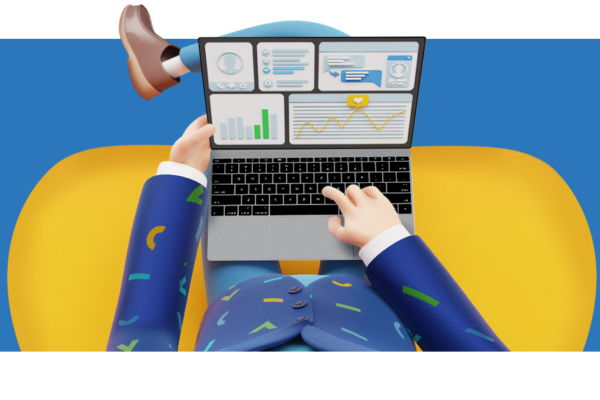As time is constantly accelerating, process control that was once enough is now insufficient. Companies can lose tens to hundreds of thousands of euros a month due to inefficiency. However, you often don’t need to do much to spend your money and use the time of your employees better. For example, engage an external consultant who can analyse the current situation, propose the optimal solution and oversee the implementation of improvements.
Increasing demands are placed on data processing and their subsequent use for business models to ensure greater efficiency of the company. That’s why more and more entities use the services of specialised companies and consultants whose only task is to improve the existing processes. However, there is a lot of work behind every proposed solution.
We prefer long-term relationships
In Medor, we need to get to know every new client first. Our company’s philosophy is based on partnership. We have worked on several short-term assistance contracts, but we usually have a long-term relationship with our clients, which helps on the way to constant progress. We see great benefits in a long-term partnership.
Right at the beginning, we need to confirm that we are in the same boat and hear the client’s vision. The next step is to go through the current functioning of internal and external processes so that we can best understand where we are.
Excel as the No. 1 tool
In the initial analysis, in addition to general information, we find out what input data the client works with, what resources can be used and what the client’s technical possibilities are. There are still dozens, perhaps even hundreds, of companies in this country with monthly turnover exceeding tens of millions of euros that rely on good old Excel (which can only be used properly by a few people in the company).
This can lead to data inconsistencies, which then affects the operation of the entire company. We certainly have nothing against Excel – it is still one of the most used tools in our company as well. Simple is powerful. But it is necessary to respond to current trends and use technological innovations that appear on the market.
Tailor-made solutions are not a cliché
It is the absence of modern tools that we see at the beginning as a big problem for many clients. There is nothing to be surprised about. For their proper use, a specialisation is needed, which is something companies often don’t realise or can’t afford. That’s why they rely on proven tools and, instead of highly returnable investments, they have unnecessarily high costs of running the company.
Therefore, after the initial analysis, it is time for business analysis, in which we look for a data-based solution that would streamline the company’s operation. Each analysis is based on the client’s needs. It is not possible to find a general solution that would work across the market. Therefore, the participation of a consultant who utilises their knowledge and experience for the benefit of our partner is important. The consultant becomes a member of the client’s team, not only preparing solutions, but also overseeing their proper implementation.
Reporting and the following steps…
Every solution should now rely on automation, which saves our clients tens of thousands of euros a month. However, the implementation doesn’t end there. For the following steps and further phases of cooperation, detailed reporting is needed to show other possibilities for increasing efficiency.
Increasing demands are placed on data processing and their subsequent use for business models to ensure greater efficiency of the company. That’s why more and more entities use the services of specialised companies and consultants whose only task is to improve the existing processes. However, there is a lot of work behind every proposed solution.
We prefer long-term relationships
In Medor, we need to get to know every new client first. Our company’s philosophy is based on partnership. We have worked on several short-term assistance contracts, but we usually have a long-term relationship with our clients, which helps on the way to constant progress. We see great benefits in a long-term partnership.
Right at the beginning, we need to confirm that we are in the same boat and hear the client’s vision. The next step is to go through the current functioning of internal and external processes so that we can best understand where we are.
Excel as the No. 1 tool
In the initial analysis, in addition to general information, we find out what input data the client works with, what resources can be used and what the client’s technical possibilities are. There are still dozens, perhaps even hundreds, of companies in this country with monthly turnover exceeding tens of millions of euros that rely on good old Excel (which can only be used properly by a few people in the company).
This can lead to data inconsistencies, which then affects the operation of the entire company. We certainly have nothing against Excel – it is still one of the most used tools in our company as well. Simple is powerful. But it is necessary to respond to current trends and use technological innovations that appear on the market.
Tailor-made solutions are not a cliché
It is the absence of modern tools that we see at the beginning as a big problem for many clients. There is nothing to be surprised about. For their proper use, a specialisation is needed, which is something companies often don’t realise or can’t afford. That’s why they rely on proven tools and, instead of highly returnable investments, they have unnecessarily high costs of running the company.
Therefore, after the initial analysis, it is time for business analysis, in which we look for a data-based solution that would streamline the company’s operation. Each analysis is based on the client’s needs. It is not possible to find a general solution that would work across the market. Therefore, the participation of a consultant who utilises their knowledge and experience for the benefit of our partner is important. The consultant becomes a member of the client’s team, not only preparing solutions, but also overseeing their proper implementation.
Reporting and the following steps…
Every solution should now rely on automation, which saves our clients tens of thousands of euros a month. However, the implementation doesn’t end there. For the following steps and further phases of cooperation, detailed reporting is needed to show other possibilities for increasing efficiency.



